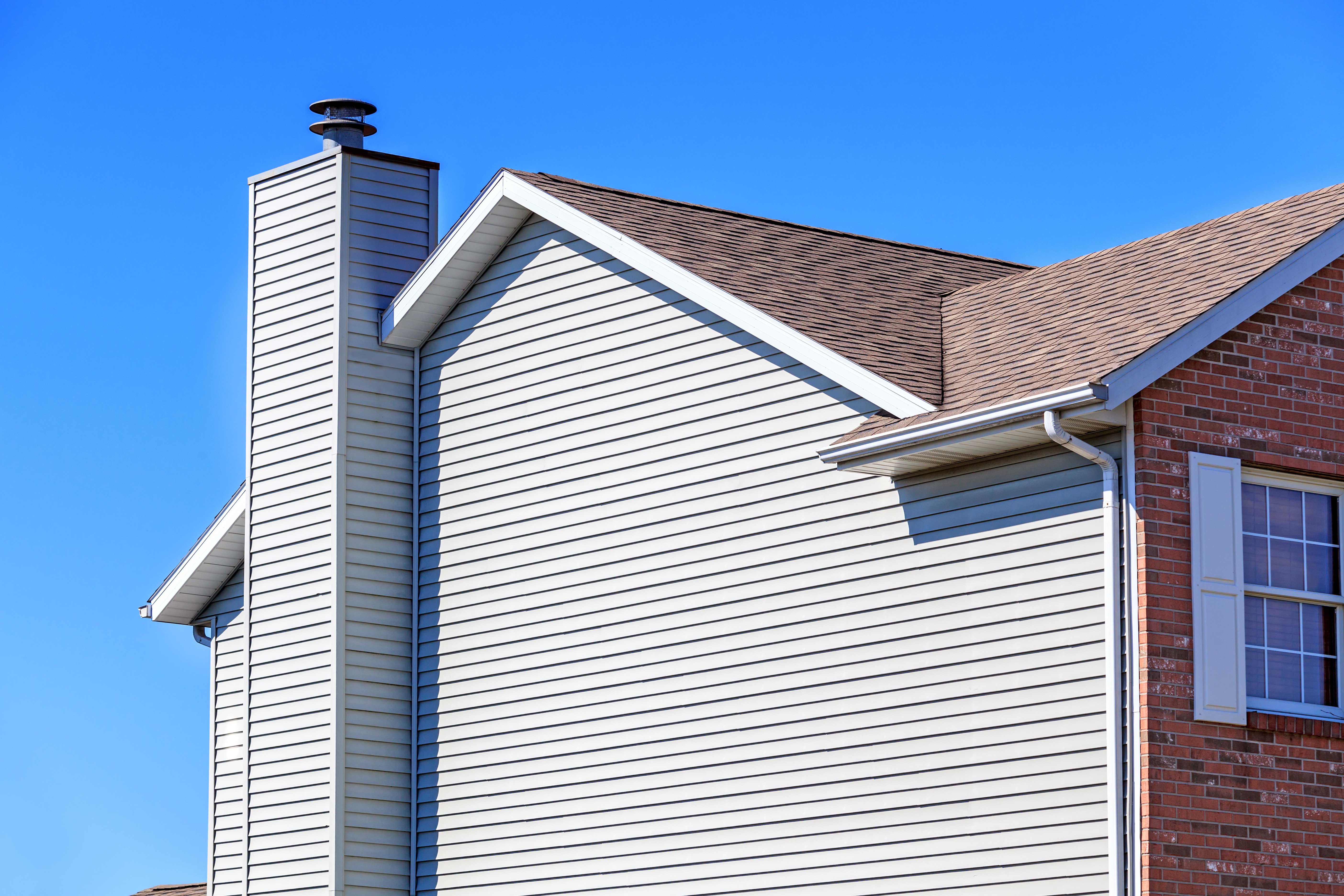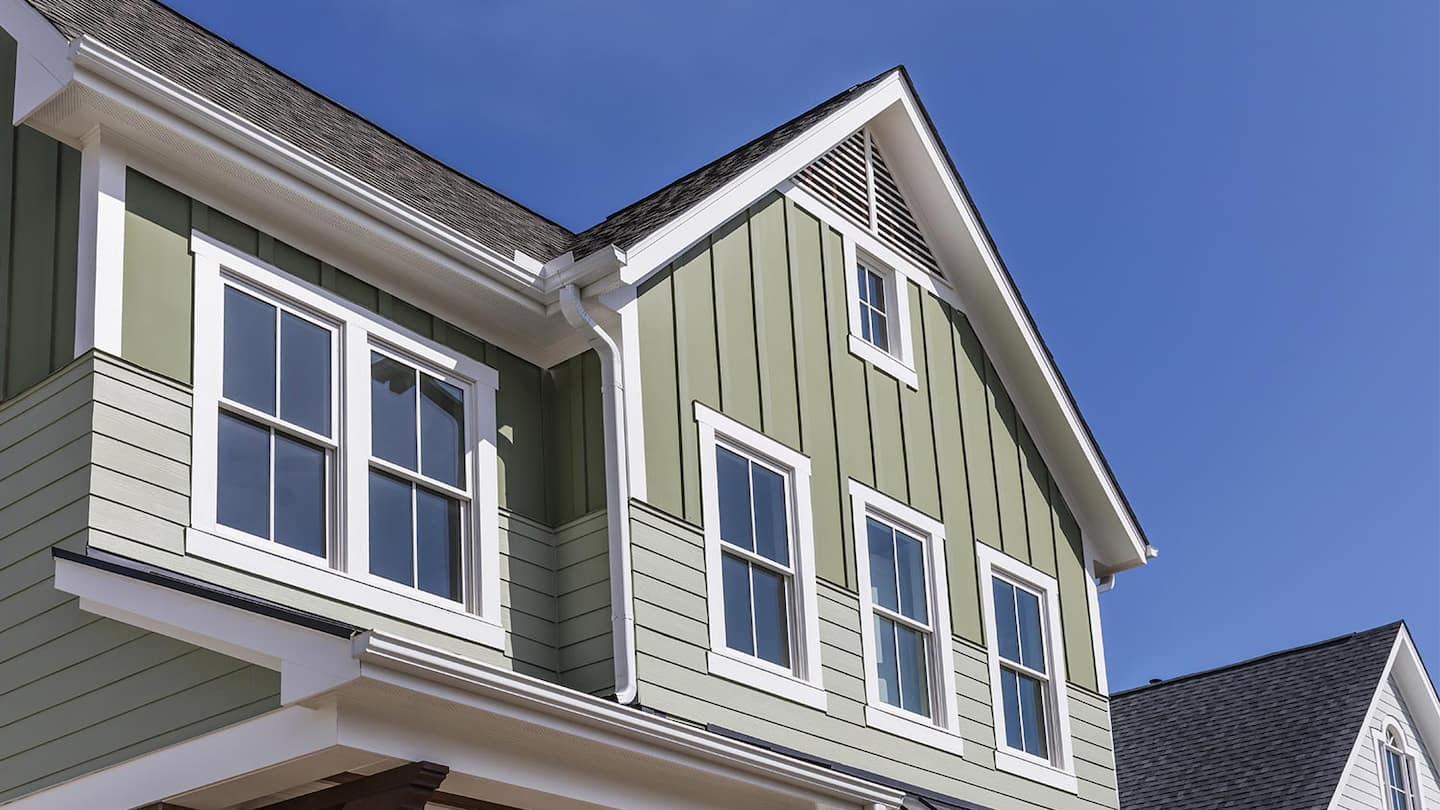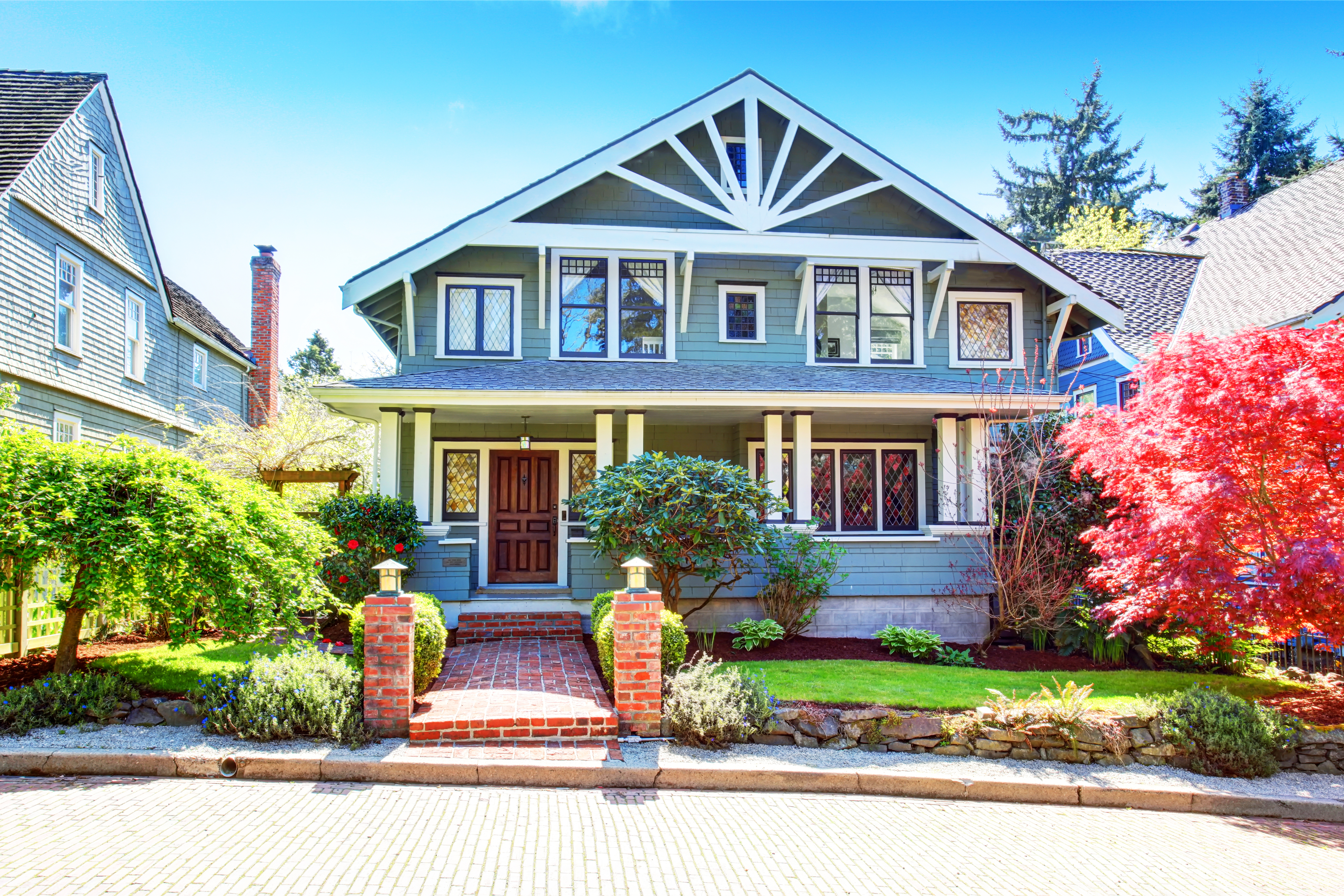
In addition to protecting against extreme Midwest temperatures, new siding in Columbus adds curb appeal. Learn about siding replacement cost in Columbus.
Switching up the exterior adds both curb appeal and value to your home


There’s nothing wrong with a monochromatic design for your home’s exterior, but it’s exciting to try mixing siding types. Like clothing, the matchy-matchy look can sometimes turn your siding into a bit of a snooze fest. You can liven up the neighborhood—in a good way—when you mix and match siding for your home’s facade. It just takes a little thoughtfulness and planning to get the combination just right.

There are a few things to consider when mixing siding types to create a unique exterior home design that maximizes curb appeal and doesn’t seem too busy.
When you combine different types of siding, you add texture and intrigue to your home. Depending on the materials and colors you choose, mixed siding can look good even on homes with more traditional architecture.
For example, you could choose gray vinyl siding for the majority of the house and install a light-colored stone veneer on key focal points of the exterior, like the entryway. You can also try experimenting with different siding materials and textures on second-story bump-outs or additions. Couple cedar shake siding with clapboard vinyl for a traditional look.
Mixing materials for the exterior is not only easier on the eyes, but it can be easier on your wallet. For example, doing the entire home in brick will set you back quite a bit, but using the brick as an accent to vinyl or wood siding is far more cost-effective. Consult a local siding contractor to determine whether this mixing style is the right fit for your project and budget.
Another way to mix up siding is to vary the direction of the slats. For example, you might have the vinyl siding installed horizontally on broad portions of the house, but you can turn the slats vertically for the surface of any dormers or gables. Even though you’re using the same color material throughout, the different directions will allow for a textured look that is very attractive and cohesive.
When it comes to choosing vinyl siding colors, neutral colors are always a good choice for home exteriors, particularly if you are thinking of selling your home in the near future. Dark or bright colors can be a turnoff for some home buyers, which means a smaller buyer pool and the potential for a lower selling price.
If you like color, you can always add it by way of your landscaping with vibrant flowers and shrubs. It’s better to experiment with bolder color trends indoors, like painting an accent wall in your living room.
There’s more good news: some siding options provide a higher resale value but are expensive to install. Mixing siding types lets you get the best of both worlds. Consider adding sections of stone veneer, stone, brick, brick veneer, and fiber cement, all of which provide an above-average return on investment (ROI) of 80% or more.
Keep in mind that you want your home to stand out—just not like a sore thumb. Take your neighbors’ homes into consideration when choosing colors and materials, as you don’t want to choose siding that will clash too much with theirs. Unless you have a strict HOA that limits your home improvement projects, you don’t need to completely match the other homes on your block in color or style, but taking them into consideration is wise.
Choosing colors and materials for the exterior of your home is a big decision. If you choose the wrong combination, it could turn out to be a big mistake, not to mention an expensive one. There’s good news for indecisive homeowners: many contractors use software to create digital renderings of your home’s exterior so you can test out a variety of color and texture combos and different types of cladding and siding before making a final decision.
When it comes to pairing different siding materials, think about texture first. Some materials, like stone, will offer more depth and shape, while others, like vinyl and fiber cement, create a sleek, elongated look. Combining two contrasting materials can give your home visual intrigue and allow you to highlight certain parts of the architecture.
Stucco is a timeless, sought-after option, as is the look of stone—when used together, you can have a simpler material paired with something more textural and striking. If you already have stucco siding, you can put new siding over the stucco for an easy facelift for your home.
Both brick and wood are made from organic materials, but have totally different textures and colors that complement each other. Try brick in the central sections of your home paired with horizontal wood lap siding on the sides, or use brick on the first floor and wood on the second-story bump-outs to make them pop.
For a contemporary look, pair the wide panels of fiber cement with the industrial look of metal siding. The metal adds some flair, while the fiber cement will create a sense of depth with its long lines.
Another option that feels very modern is the organic texture of wood that complements shiny, industrial metal well. Consider wood siding on the main walls with metal installed on the side, on the second story, or just on awnings for a pop of contrast.
Window Depot did an amazing job on my deck. I wasnt sure what I wanted to do, but their composite decking was affordable and will last a long time. I am excited to have family over, and I am no longer embarrassed by my backyard. Jeff and the ground crew were polite, respectful, and caring for...
We used Unique Hardwood Floor LLC three years ago to work on the floors of a 70 year old home that needed a great deal of work. Some floors needed repairs, some were replaced and others just needed to be refinished. It was a complicated job as they needed to blend the old and the new to...
We live in a condo and had space to add a tall cabinet. The problem was the space was already occupied by our catsâ litter box. We needed to still keep the litter box in that same corner. Beiler Custom Cabinets was able to work with our need and design request. What was created was an...
Bill Gerhardt sold the company to his employees at the end of 2019, apparently without a workable succession plan and without notifying prospective customers of this fact. Most aspects of the maintenance contract have not been fulfilled: no installation of anual plantings per contract, no...
We had a gutter blockage that was causing water to sheet down the side of the house and ultimately it started to come in at a window (need mortar people next). Called around 7:30am, and he responded by 8am. He was able to come out the same morning and do a look over and clean out. He also...
The company was very easy to work with. My family is now able to enjoy a space that at one point, only collected junk!!!! I feel like i have a whole new addition to the house!!! Wonderful work Blurock on our basement, will recommend!
Roger met me at a moments notice. I was in a bind. He was available and very accommodating. He was right on time, very professional.. the transaction was seamless! Thank you for your help I look forward to working together more in the future.
We had the solar paneling installed over the summer and the folks from Ecohouse they had a very competitive bid. They were able to make recommendations on the siding, whether it would be a good idea to get solar. They did an excellent job with the installation. They also helped us arrange...
Awful. Made an appointment 1 month in advance. Two days before the delivery appointment they called and said they would be there in the morning to pick up my furniture. The appointment was made at 4:30 in the afternoon, and I had written it down to make sure. I told them that the correct...
Nice group of workers, very friendly. Day 1 covered everything before starting, seemed very organized. Things seemed to be going great. Day 2 they didn't show up until around 10:00a.m. and work crew was cut in half, was told they had another job. Day 3 they didn't show up until around...
From average costs to expert advice, get all the answers you need to get your job done.

In addition to protecting against extreme Midwest temperatures, new siding in Columbus adds curb appeal. Learn about siding replacement cost in Columbus.

The cost of siding repair varies depending on material, design, and damage. This helpful guide covers the siding repair costs to expect in Columbus, Ohio.

New vinyl siding adds value and curb appeal to homes in Columbus, Ohio. Learn about average vinyl siding installation costs in Columbus, Ohio.

It's the age-old siding debate: to caulk or not to caulk Hardie Board. In most cases, Hardie Board discourages caulk use, but it's important to see the whole picture.

If you’re considering adding vinyl siding to your home, you may wonder: How long does vinyl siding last? Learn everything you need to know in this guide.

Picking between Hardie board and traditional cement board siding? Our comparison guide will help you decide.